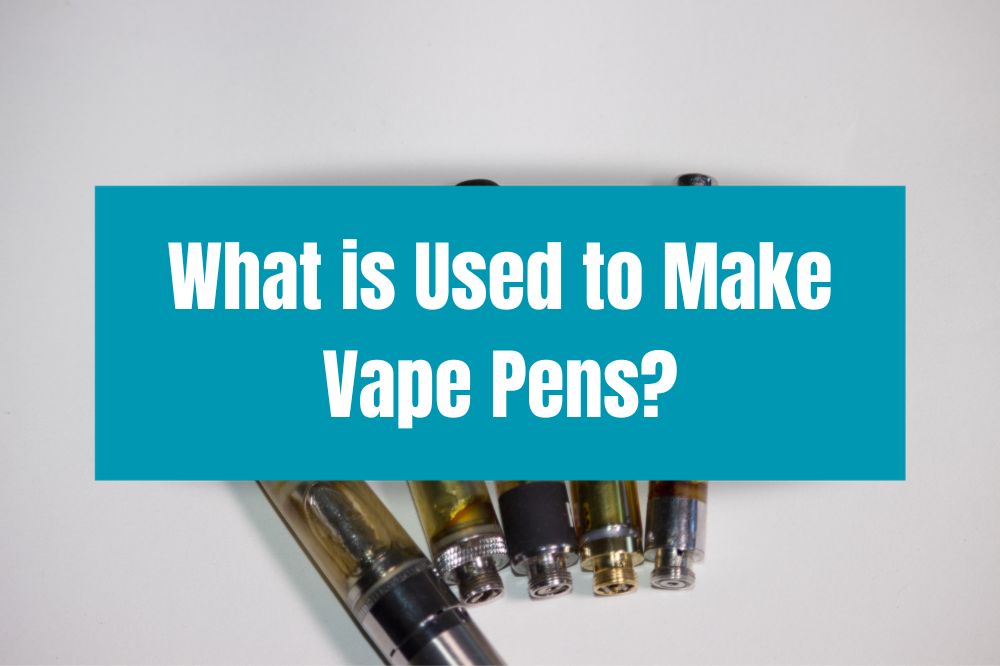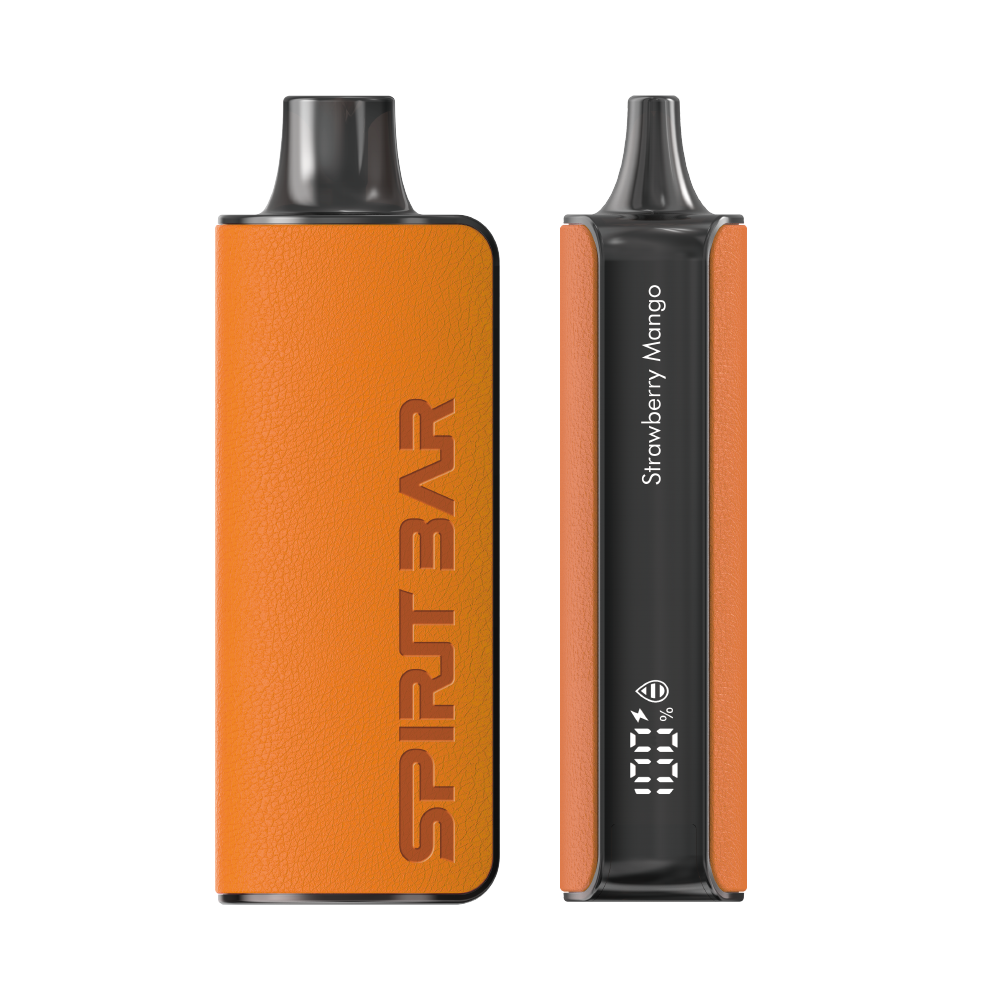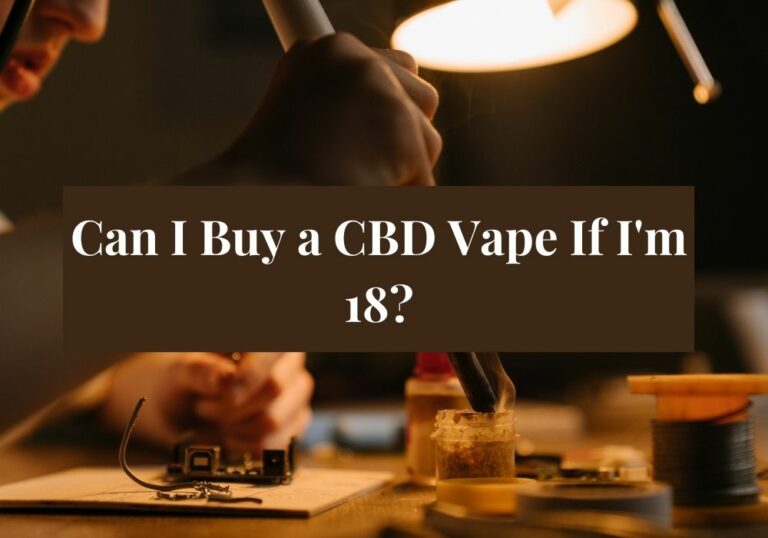What is Used to Make Vape Pens?

If you’re curious about what materials are used to make vape pens, you’re not alone. Vaping has become increasingly popular in recent years, and many people are interested in learning more about these devices. In this article, we’ll explore the various components that make up a vape pen and how they work together to produce vapor.
At the most basic level, a vape pen consists of a battery, a heating element, and a cartridge or tank that holds the e-liquid. The battery provides power to the heating element, which in turn vaporizes the e-liquid. Depending on the type of vape pen, the cartridge or tank may be disposable or refillable. Some vape pens also have adjustable settings, allowing you to customize your vaping experience.
Now that we’ve covered the basics, let’s take a closer look at the materials used to make vape pens. The battery is typically made from lithium-ion, which is a lightweight and durable material that can hold a charge for a long time. The heating element is often made from ceramic or metal, which can withstand high temperatures without breaking down. The cartridge or tank is usually made from plastic or glass, and the mouthpiece may be made from metal or plastic. E-liquid, the substance that is vaporized in a vape pen, typically contains a mixture of propylene glycol, vegetable glycerin, flavorings, and sometimes nicotine.
Components of Vape Pens
Vape pens are handheld devices used to vaporize substances such as e-liquids, oils, and waxes. They are made up of several components that work together to produce vapor. Here are the main components of vape pens:
Battery
The battery is the power source for the vape pen. It provides the energy needed to heat up the atomizer and vaporize the substance. Most vape pens use lithium-ion batteries, which are rechargeable and provide a long-lasting power source. Some vape pens have built-in batteries, while others have removable batteries that can be replaced.
SPIRITBAR Katana BP10000
- Slender, leather-textured body reminiscent of a katana handle for an authentic samurai feel
- Unique samurai-inspired e-liquid flavor - fruity yet not too sweet, with a luxurious, elegant aroma
- Powerful 650mAh rechargeable battery for extended vaping time
- Large 18ml e-liquid capacity and 10,000 puff capacity
- Advanced mesh coil and e-liquid & power display screens for optimal vaping experience
The special juice captures the essence of the samurai spirit with its rich, smoothly pulsating flavor that brings new satisfaction with every puff. The device's slender, leather-textured design evokes the grip of a samurai's katana, making this product a perfect choice for beginner vapors.
Atomizer
The atomizer is the heating element of the vape pen. It is responsible for heating up the substance and turning it into vapor. Atomizers come in various types and designs, but they all have a heating coil that heats up when the battery is activated. The coil is usually made of a metal wire, such as kanthal or nichrome, and is wrapped around a wick or a ceramic rod.
Tank or Cartridge
The tank or cartridge is the container that holds the substance to be vaporized. It is usually made of glass or plastic and is attached to the atomizer. Tanks are used for e-liquids, while cartridges are used for oils and waxes. Some vape pens have refillable tanks or cartridges, while others use pre-filled ones that can be replaced when empty.
Mouthpiece
The mouthpiece is the part of the vape pen that you inhale from. It is usually made of plastic or metal and is attached to the tank or cartridge. Some mouthpieces are removable and can be replaced with different ones for a customized vaping experience.
Power Button
The power button is the switch that activates the battery and heats up the atomizer. It is usually located on the side or bottom of the vape pen and is pressed to turn the device on or off. Some vape pens have automatic sensors that activate the battery when you inhale from the mouthpiece.
In conclusion, vape pens are made up of several components that work together to produce vapor. The battery provides the power, the atomizer heats up the substance, the tank or cartridge holds the substance, the mouthpiece is where you inhale from, and the power button activates the battery.
SPIRITBAR Jack’s Flask 9000 Puffs
- Stylish pirate flask-shaped body providing an exciting vaping experience
- Delivering up to 9000 puffs per device
- 20ml e-liquid capacity with 50mg nicotine strength for satisfying throat hit
- Specialized pirate-themed e-juice flavors for rich, swirling taste
- Premium mesh coil optimizes flavor profile for maximum vaping enjoyment
This disposable vape captures the daring spirit of the high seas with its flask styling and signature pirate e-juice flavors. The extraordinary battery life provides 9000 indulgent puffs for extended vaping pleasure. Live boldly and freely with the Jack's Flask - a legendary vaping experience fit for a pirate's adventures.
Materials Used
When it comes to building a vape pen, there are several materials used in the process. Here are the most common ones:
Battery
The battery is the power source of the vape pen and is responsible for heating up the atomizer. Most vape pens use rechargeable lithium-ion batteries, which are known for their reliability and long lifespan. Some vape pens also use disposable batteries, which are more convenient but not as environmentally friendly.
Atomizer
The atomizer is the part of the vape pen that heats up the e-liquid and turns it into vapor. Most atomizers use a heating element made of either metal or ceramic. Metal heating elements are more common and cheaper, but ceramic heating elements are known for producing better flavor and smoother vapor.
Tank
The tank is the part of the vape pen that holds the e-liquid. Most tanks are made of either plastic or glass. Plastic tanks are cheaper and more durable, but they can be affected by certain e-liquids and crack over time. Glass tanks are more expensive and fragile, but they are resistant to most e-liquids and provide a better flavor.
Coils
Coils are the part of the atomizer that heats up the e-liquid. Most coils are made of either metal or ceramic. Metal coils are more common and cheaper, but they can produce a metallic taste and burn out faster. Ceramic coils are more expensive but produce better flavor and last longer.
Wick
The wick is the part of the atomizer that absorbs the e-liquid and delivers it to the coils. Most wicks are made of either cotton or silica. Cotton wicks are more common and cheaper, but they can burn out faster and produce a dry hit. Silica wicks are more expensive but last longer and produce a better flavor.
Overall, vape pens are made of several materials that work together to produce a satisfying vaping experience. By understanding the different materials used in vape pens, you can choose the one that best suits your needs and preferences.
Manufacturing Process
When it comes to manufacturing vape pens, there are three main components to consider: the battery, the atomizer, and the mouthpiece. Each of these components is produced separately before being assembled into the final product.
Battery Production
The battery is the power source for the vape pen. It is typically made using lithium-ion technology, which is lightweight and rechargeable. The manufacturing process for the battery involves several steps, including:
SPIRITBAR Katana BP10000
- Slender, leather-textured body reminiscent of a katana handle for an authentic samurai feel
- Unique samurai-inspired e-liquid flavor - fruity yet not too sweet, with a luxurious, elegant aroma
- Powerful 650mAh rechargeable battery for extended vaping time
- Large 18ml e-liquid capacity and 10,000 puff capacity
- Advanced mesh coil and e-liquid & power display screens for optimal vaping experience
The special juice captures the essence of the samurai spirit with its rich, smoothly pulsating flavor that brings new satisfaction with every puff. The device's slender, leather-textured design evokes the grip of a samurai's katana, making this product a perfect choice for beginner vapors.
- Mixing the raw materials, which typically include lithium, cobalt, and graphite, into a slurry
- Coating the slurry onto a thin metal foil, which is then rolled into a cylindrical shape
- Adding a separator layer and electrolyte to the cylinder
- Sealing the cylinder with a metal cap and insulating it with plastic
Once the battery is complete, it is tested to ensure that it meets the necessary safety and performance standards.
Atomizer Production
The atomizer is the part of the vape pen that heats up the liquid and turns it into vapor. It typically consists of a heating coil and a wick, which are enclosed in a metal or ceramic housing. The manufacturing process for the atomizer involves several steps, including:
- Cutting and shaping the metal or ceramic housing
- Coiling the heating wire around a ceramic rod or other support structure
- Assembling the coil and wick into the housing
- Testing the atomizer to ensure that it heats up properly and produces vapor
Mouthpiece Production
The mouthpiece is the part of the vape pen that you inhale from. It is typically made from plastic or metal and may include a removable drip tip for easy cleaning. The manufacturing process for the mouthpiece involves several steps, including:
- Shaping the plastic or metal into the desired form
- Adding any necessary features, such as a drip tip or air holes
- Testing the mouthpiece to ensure that it fits properly and is comfortable to use
Once all three components are complete, they are assembled into the final product and tested to ensure that they work properly. The finished vape pens are then packaged and shipped to retailers and consumers around the world.
Quality and Safety Standards
When it comes to choosing a vape pen, quality and safety standards are crucial factors to consider. The vape industry is largely unregulated, and there are many low-quality products on the market that can pose health risks to users. To ensure that you are getting a safe and high-quality vape pen, there are a few things to look out for.
Firstly, it is important to choose a reputable brand that is transparent about their manufacturing processes and materials. Look for brands that use high-quality materials such as medical-grade stainless steel or titanium, and avoid those that use cheap materials like plastic or low-grade metals.
Secondly, check for third-party testing and certification. Reputable brands will have their products tested by independent labs to ensure that they meet safety and quality standards. Look for certifications such as CE, RoHS, and FCC, which indicate that the product has been tested and meets certain safety standards.
Another important factor to consider is the type of battery used in the vape pen. Lithium-ion batteries are the most common type used in vape pens, but they can be dangerous if not handled properly. Look for vape pens with built-in safety features such as short-circuit protection, overcharge protection, and over-discharge protection to ensure that the battery is safe to use.
Finally, consider the type of cartridge or pod used in the vape pen. Look for brands that use high-quality materials and test their cartridges for heavy metals and other contaminants. Avoid brands that use cheap materials or have a history of recalls or safety issues.
By taking these factors into consideration, you can ensure that you are getting a safe and high-quality vape pen that meets industry standards for quality and safety.
Environmental Impact
When it comes to the environmental impact of vape pens, it’s important to consider the materials used in their construction, as well as how they are disposed of. Vapes are particularly bad for the environment because they are made of plastic, hazardous, and electronic waste (e-waste). All of these materials are hazardous to the environment.
The device body and pod components are made of plastic, which creates plastic waste. The problem with plastic is that it doesn’t biodegrade easily, and it can take hundreds of years to break down. This means that discarded vape pens can end up in landfills or oceans, where they can harm wildlife and pollute the environment.
In addition to creating plastic waste, discarded vape pens can also be considered both e-waste (because of their circuitry and lithium-ion batteries) and hazardous waste (because they contain nicotine salts, heavy metals, lead, mercury, and flammable lithium-ion batteries). These materials can leach into waterways, soil, and wildlife, potentially causing harm to the environment.
One of the biggest contributors to vape waste is disposable e-cigarettes. These devices are designed to be used once and then thrown away, which means that they generate a lot of waste. Unlike cigarette butts, which can biodegrade under certain conditions, e-cigarette waste won’t break down easily. This means that it can remain in the environment for a long time, potentially causing harm to wildlife and ecosystems.
To minimize the environmental impact of vape pens, it’s important to dispose of them properly. This means recycling the plastic components, disposing of the batteries safely, and avoiding throwing them in the trash. It’s also worth considering using rechargeable devices instead of disposable ones, as this can help to reduce waste and minimize the environmental impact of vaping.
Regulations and Compliance
When it comes to regulations and compliance for vape pens, there are several laws in place to ensure the safety of consumers. The FDA regulates vape pens as electronic nicotine delivery systems (ENDS), and they have implemented rules that manufacturers must follow.
One of the most significant regulations is the Prevent All Cigarette Trafficking (PACT) Act, which was amended in March 2021 to include ENDS. This act requires any person or business that sells, transfers, or ships ENDS in interstate commerce to register with the Bureau of Alcohol, Tobacco, Firearms, and Explosives (ATF). It also mandates that shippers of nicotine and cannabis vaping products comply with the PACT Act.
Manufacturers of vape pens must also comply with state laws and regulations. For example, in California, there are strict labeling requirements for nicotine-containing products, including vape pens. The labels must include a warning that nicotine is a highly addictive substance and may be harmful to your health.
In addition to labeling requirements, manufacturers must also comply with packaging regulations. For example, in some states, vape pens must be sold in child-resistant packaging to prevent accidental ingestion by children.
Overall, regulations and compliance are critical in ensuring the safety of consumers who use vape pens. Manufacturers must follow strict guidelines to ensure that their products meet regulatory standards and are safe for use. By complying with these regulations, manufacturers can help prevent accidents and ensure that their products are of the highest quality.








